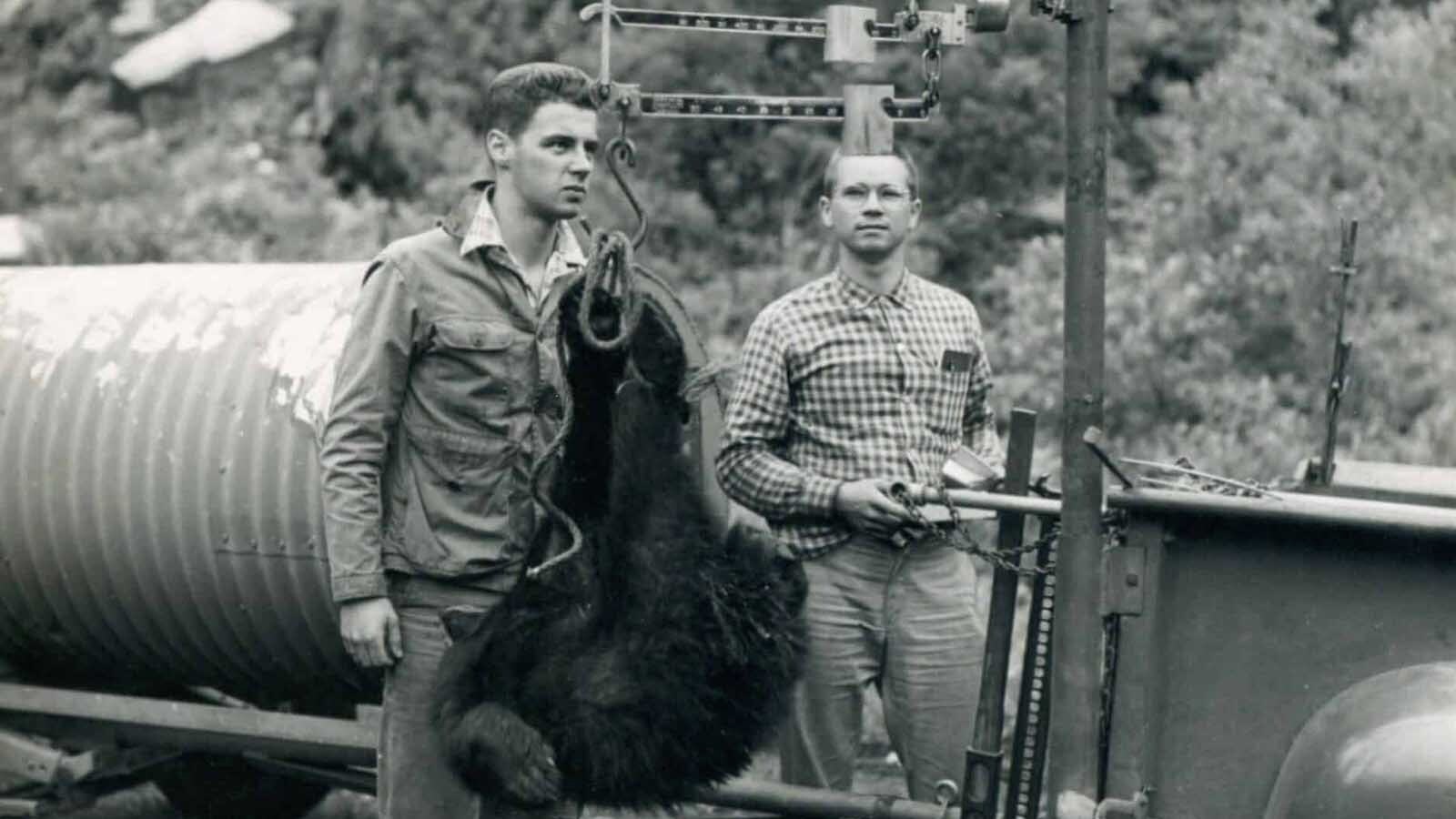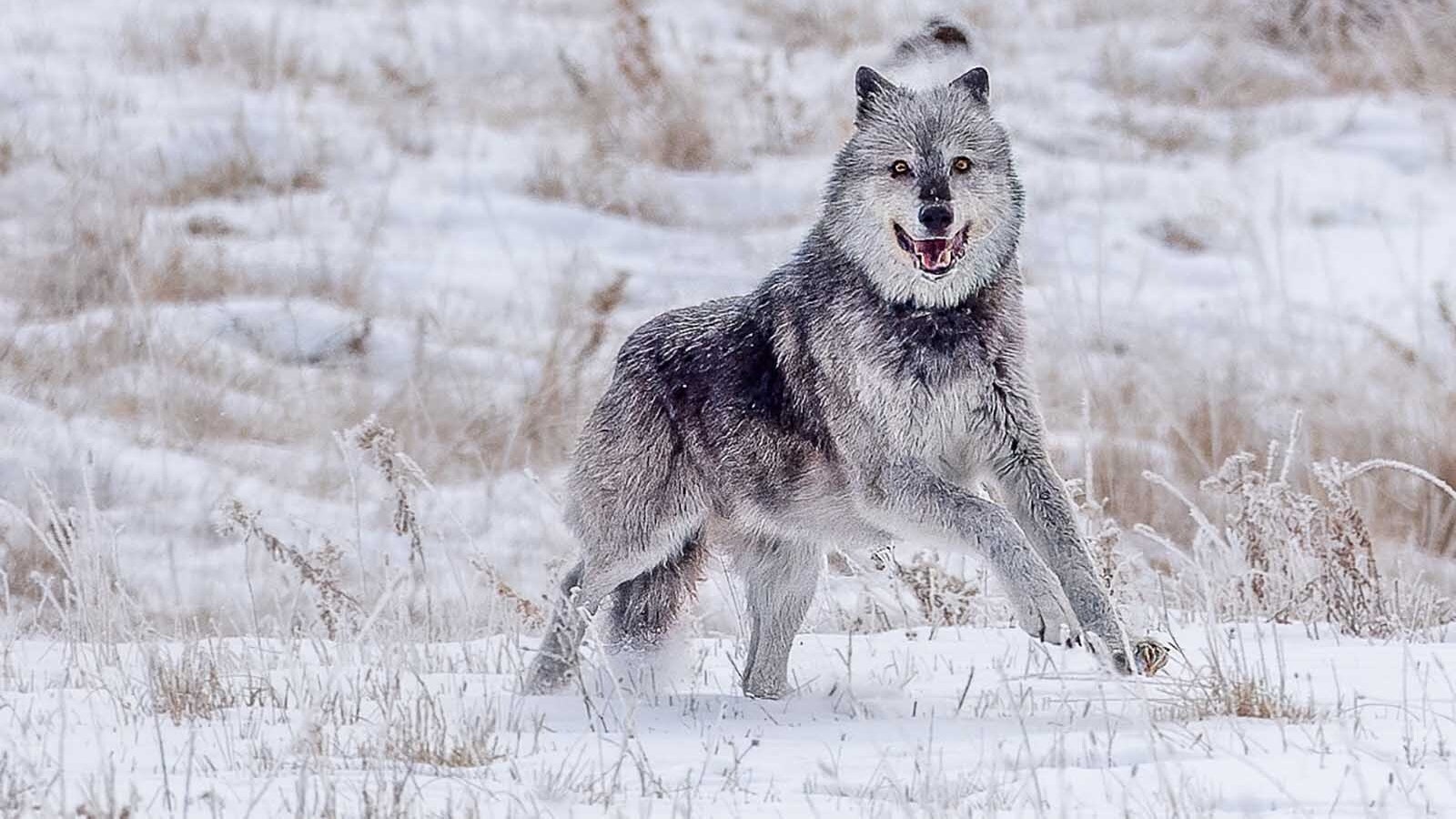It's been a quiet wildfire season in Wyoming so far but the skies over the Cowboy State are hazy and smoky from a rash of intense wildfires burning elsewhere in the U.S. West.
The Environmental Protection Agency's AirNow Fire and Smoke Map shows smoke covering all of Wyoming. Air quality is ranked as “moderate,” meaning anyone "unusually sensitive to particle pollution" should avoid going outdoors for prolonged periods.
While no significant wildfires are burning in Wyoming, smoke from a number of out-of-state fires will continue to smother the Cowboy State for the next few days at least.
"What's developed over the last several days is just the right pattern to bring the smoke into the Northern Rockies and High Plains," said Cowboy State Daily meteorologist Don Day. "Unfortunately, it's probably going to be smoky through Wednesday before any significant change."
Winds Aloft
Day said the smokey haze over Wyoming comes from large wildfires burning in Montana, Idaho and eastern Oregon. The smoke from those fires is being carried southward courtesy of wind patterns.
"Winds aloft is everything from the ground up to about 30,000 feet," he said. "That's what dictates the amount of smoke in Wyoming, especially since we don't have any significant fire activity. We need those wind patterns to change, but it's looking like it'll be the same pattern for the next three days."
Bring On The Broom
Day added that the current winds are weak, which means the smoke has been lingering without much movement. What Wyoming needs is "a broom" that isn't in the forecast for the next few days.
"You need some type of system, whether it's a cold front, a storm or a shift in the wind direction, to act like a broom to sweep it out," he said. "Right now, we're in a situation where there's no broom for three days."
The extended forecast offers some relief. Day anticipates that the prevailing wind patterns will change moving into Thursday, Friday and the weekend to sweep clearer air into Wyoming.
"The winds aloft will be coming from the southwestern United States, not the Pacific Northwest," he said. "While I don't see it completely eradicating smoke out of the state, it's certainly going to help."

Where There's Smoke
Four separate wildfires are burning in southeastern Montana within 100 miles of the Wyoming/Montana border. As of Monday, InciWeb reports the fires have collectively burned nearly 48,000 acres and are between 74% and 100% contained.
The Durkee and Cow Valley fires in eastern Oregon are the largest wildfires contributing to Wyoming's smoky skies. The two wildfires have burned more than 300,000 acres between them, and while the smaller Cow Valley Fire is 78% contained as of Monday, the Durkee Fire is entirely uncontained.
Day said several large wildfires are also burning in Canada. Those are entirely uncontained, and that's not going to change.
"The big sources of smoke that we're getting come from very rugged wilderness areas in Northwest Canada, where they just let the fires burn," he said. "Some of those areas are so remote, they're going to be producing the smoke until the weather changes. Those fires could take a while to extinguish themselves."
Where There's Fire
As of Monday, there have been only a handful reported wildfires in Wyoming so far this season.
The Oregon Trail Fire burned more than 1,500 acres northwest of Alcova Reservoir, the Wallace Draw Fire burned more than 500 acres in a remote area of Converse County, and the Dixon Road Fire has burned more than 800 acres in the northwest corner of Niobrara County. The Horse Creek Fire on the border of Sublette and Lincoln counties has burned fewer than 100 acres.
Wyoming has had "good luck" up to this point in the fire season. While many variables start and contribute to the intensity of wildfires, Day said meteorological conditions may have given the state an reprieve so far.
"Good luck is No. 1," he said, "But even though it's been quite dry, we've had some well-timed rain that's helped out. We've been spared a little bit."
Day also said Wyoming avoided the worst of the intense heatwave that moved across the western United States earlier this month. While Wyoming felt the heat, its effects weren't as prolonged as in Montana, Idaho and eastern Oregon, where the wildfires sending their smoke southward are still raging.
"I don't want to jinx anything," he said. "A lot of times, these fires are started by lightning, which a lot of these have over the last couple of weeks. But you also have human-caused fires, so that's always a big variable: negligence at the wrong place, at the wrong time. There's a lot of variables and moving parts to these fires."
Where It's Worst
Given the prevailing weather patterns and the location of the active wildfires, Day said there's a disparity in the smoky skies across Wyoming. The further north you go, the smokier it gets.
"The northern and northeast counties of the state are going to have it the worst," he said.
And it'll get worse. Day said the extended forecast shows more high temperatures, and possibly some triple-digit days, in northern Wyoming before the end of the week.
"The northern part of the state is going to be the hottest part," he said. "Southern Montana and northern Wyoming will be in the 90s and near 100 degrees mid-week. Not only is it going to be smoky, but it's also going to be super-hot. Not very nice weather until we get that change at the end of the week."
It's too early to determine the air quality across Wyoming for the rest of the week, although it's likely to stay “moderate.” Day said the smoke will feel the most smothering at the lower points of high-elevation areas like Yellowstone National Park and the Bighorn Basin.
"Air quality isn't a problem as much at the high elevations, but in the high valleys," he said. "When it gets cold at night, and we get those inversions set up in the high mountain valleys, the smoke gets trapped. It's better to be on a mountain peak where the air is moving more than in a valley where that smoke can accumulate."
In summary, when it comes to smoky skies over Wyoming, it'll be three days of worse before it gets better. And that's assuming there aren't any new wildfires that ignite closer to home.
Andrew Rossi can be reached at arossi@cowboystatedaily.com.





